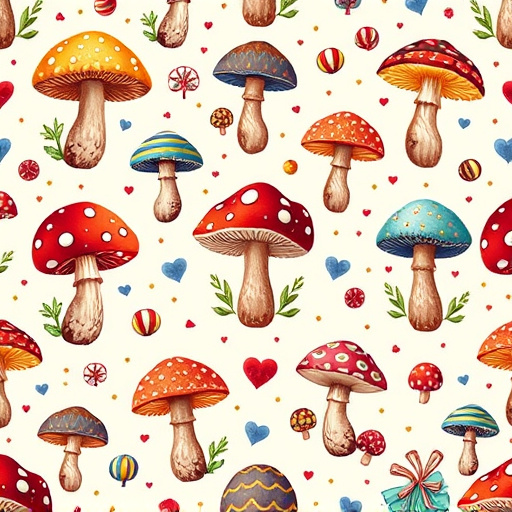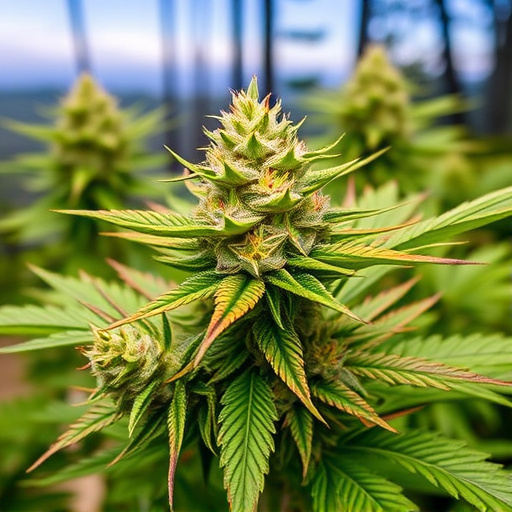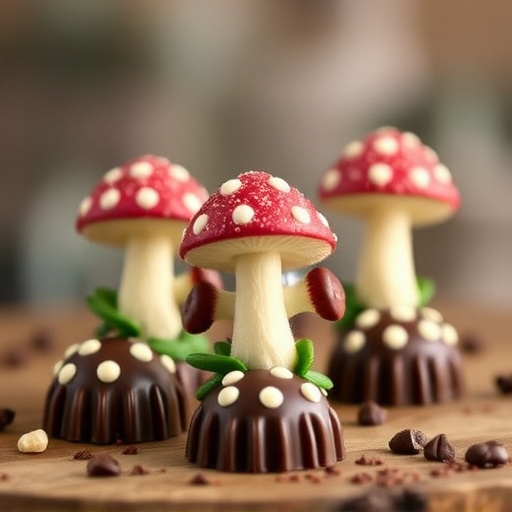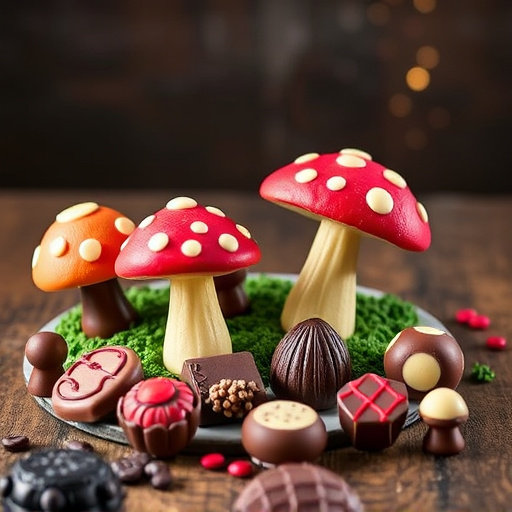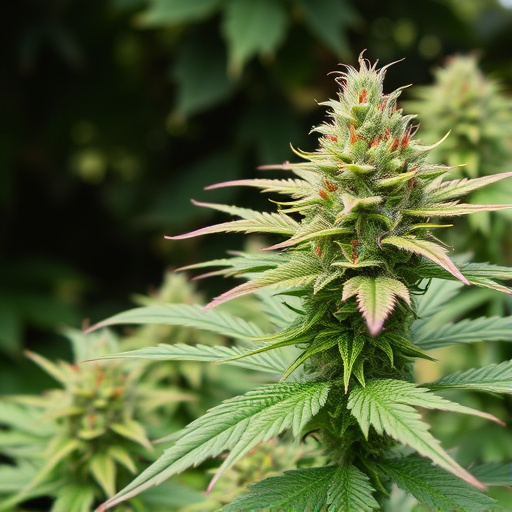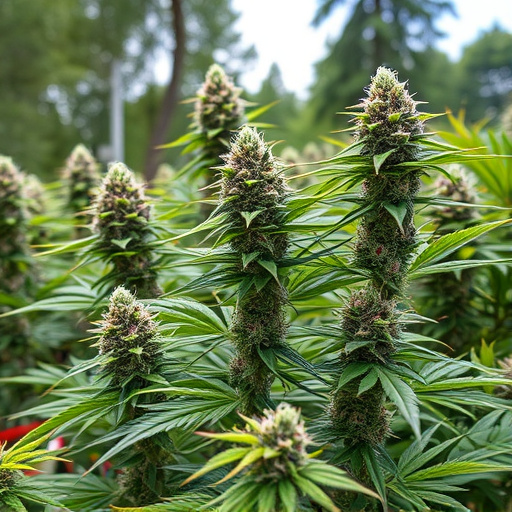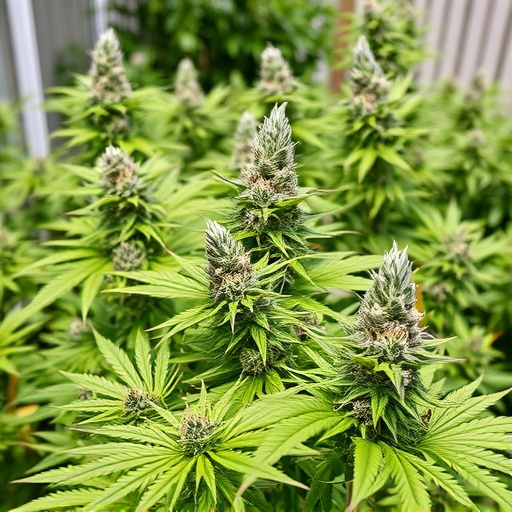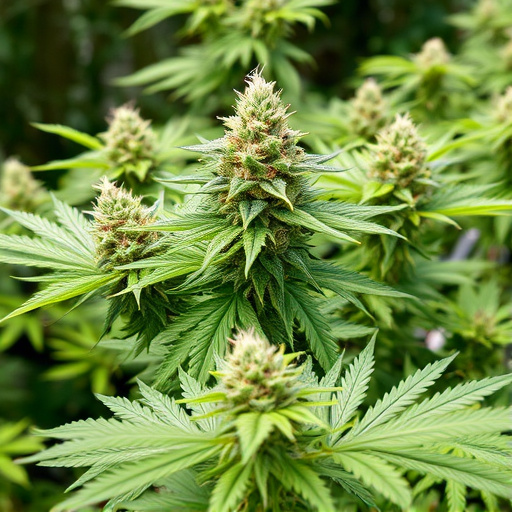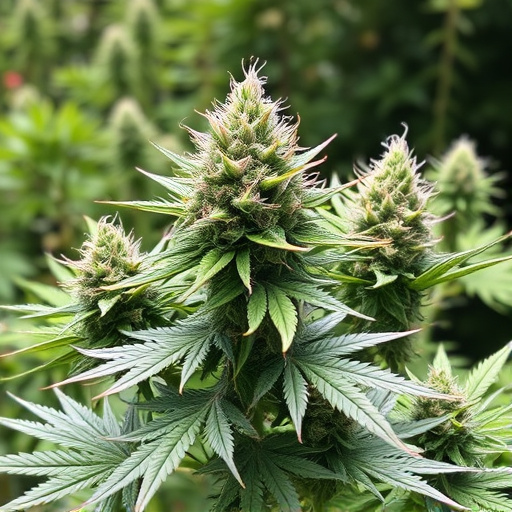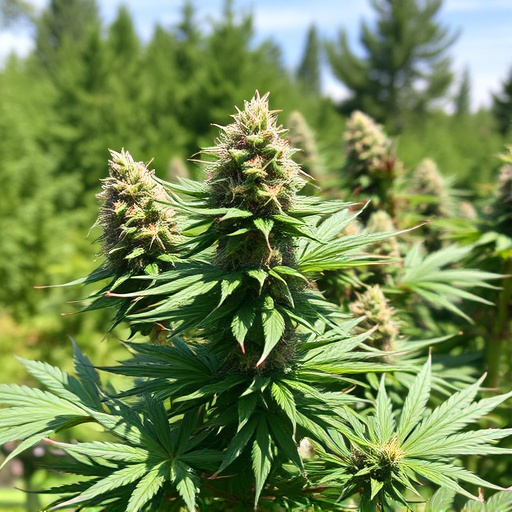The colors of outdoor cannabis strains are influenced by complex interactions between genetics and environmental factors like sunlight, temperature, and humidity. These variables impact pigment synthesis, ripening times, and terpene production, ultimately determining hues from rich reds and blues to greens. Growers carefully manage these conditions not only for aesthetic appeal but also to enhance potential therapeutic properties associated with specific outdoor cannabis strains.
“Uncover the captivating transformation of cannabis flowers as they morph from verdant greens to vibrant hues. This article explores the intriguing reasons behind the color shift in outdoor cannabis strains, delving into both external factors and intricate biochemical processes. From environmental conditions like temperature and sunlight to the production of terpenes and cannabinoids, every element plays a role. Discover how these factors contribute to the diverse and breathtaking array of colors adorning outdoor cannabis plants.”
- External Factors Influencing Color Shift
- – Environmental conditions: Temperature, sunlight exposure, and humidity levels
- – Terpene production and its impact on pigment development
External Factors Influencing Color Shift
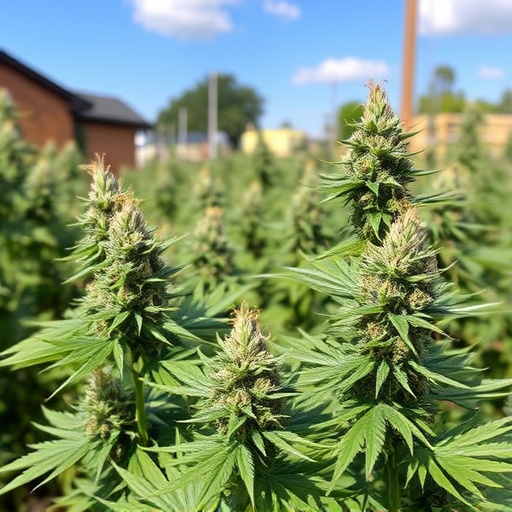
The color shift in cannabis flowers is a fascinating process, influenced by various external factors that play a crucial role in determining their final hue. For outdoor cannabis strains, environmental conditions such as sunlight exposure and temperature fluctuations significantly impact the color development. Sunlight, particularly during specific times of the day, can contribute to the production of certain pigments responsible for vibrant colors. Warmer temperatures accelerate the ripening process, allowing more time for pigment synthesis, which can result in deeper, richer hues.
Additionally, external factors like humidity and nutrient availability also come into play. Humid conditions may delay the color change, while optimal nutrient levels can enhance the overall pigmentation. Outdoor growers often meticulously manage these variables to encourage desirable color shifts, creating cannabis flowers that not only look stunning but also potentially offer unique therapeutic properties associated with specific colors.
– Environmental conditions: Temperature, sunlight exposure, and humidity levels

The colors of cannabis flowers are not solely determined by genetics, but also heavily influenced by environmental conditions. Temperature plays a significant role; cooler temperatures often promote the production of more vibrant pigments, leading to richer hues of red and blue. In contrast, warmer climates may result in milder colors or even a more uniform green shade. Sunlight exposure is another critical factor; intense direct sunlight can accelerate the maturation process, causing flowers to turn from vibrant shades to more neutral tones.
Humidity levels also impact cannabis flower color. Higher humidity encourages the development of deeper pigments, while lower humidity may cause flowers to dry out and appear lighter or even brown. For outdoor cannabis strains, these environmental cues are natural parts of the growing cycle, contributing to the diverse and stunning array of colors that make cannabis such a visually compelling plant.
– Terpene production and its impact on pigment development
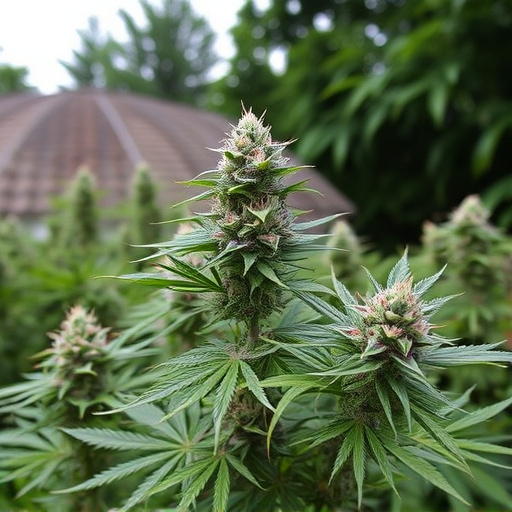
Cannabis flowers undergo a remarkable transformation as they mature, and one of the most captivating aspects is the change in color. This isn’t merely cosmetic; it’s a result of complex chemical processes, particularly the production of terpenes. Terpenes are aromatic compounds that not only give cannabis its distinct scent but also play a crucial role in pigment development. In outdoor cannabis strains, where plants are exposed to varying environmental conditions, terpene profiles can differ significantly. As these terpenes interact with pigments like anthocyanins, they influence the final color of the flowers. This dynamic relationship contributes to the diverse hues observed in mature cannabis buds, from vibrant purples and reds to deep browns and greens.
The impact of terpenes extends beyond scent and color; they also affect the plant’s flavor and potential therapeutic effects. Different terpenes have different properties, influencing how a particular cannabis strain feels when consumed. For example, myrcene, a common terpene in outdoor strains, is known for its earthier notes and relaxing effects. As such, the color change isn’t just visual—it’s part of a larger sensory experience that makes each cannabis flower unique.
The color transformation of cannabis flowers is a fascinating process influenced by both internal and external factors. Environmental conditions, such as temperature, sunlight, and humidity, play a significant role in this metamorphosis, while terpene production acts as a pivotal catalyst for pigment development. Understanding these nuances is essential for cultivators aiming to optimize the visual appeal and potential therapeutic benefits of outdoor cannabis strains. By recognizing and managing these variables, growers can ensure that their plants not only produce potent blooms but also showcase a captivating array of colors.


